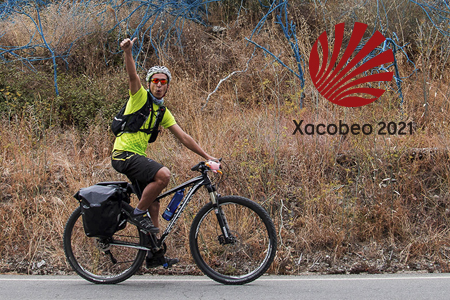I am sorry to disagree. The Camino is not just a footpath, it is a trail for use by people on foot, horse and bicycle. It is a footpath, bridleway and cycle track all rolled into one. In medieval times it was just walkers and horse riders. Indeed, if this forum had existed 800 years ago it would probably have been full of comments from walkers complaining about people on horseback. The bicycle is a darned new fangled invention, dating from the late-19th century, but since much of the modern Camino is a late-20th century resurrection of the medieval route, bicycles are quite at home here.
Not all cyclists are the same. Those who wish to ride the route as quickly as possible and those who are not up for the challenge of off-road riding use the roads. There are no exact figures as to how many cyclists are in these two categories, but my experience leads me to think it is about 50%. The other 50%, who relish the fun of off-road riding and the challenge of doing this on an historic route, want to follow the trail as much as possible. In this respect they are no different to walkers who also wish to follow the 'authentic' trail and not walk on roads all day. However, there are a few places where I believe for safety reasons it is better that cyclists take an alternative route. The descents from the Alto del Perdón to Uterga and from Manjarin to El Acebo, plus the ascent from Valcarce through La Faba to La Laguna, are obvious candidates. In my guide to
Cycling the Camino de Santiago (Cicerone Press ISBN9781852849696) I advise against using the trail for these sections and describe the alternative routes in detail. I cannot stop people riding them however. In my view they are mad to ride these sections, but they have every right to do so and long may this freedom last.
Cyclists are outnumbered about twenty to one on the trail. To progress at all, they need to be aware of walkers and treat them with respect. Bells are a legal requirement on bicycles in Spain, but I cannot make people use them. I always use mine and often shout a polite
hola! if I think I have not been heard. My former partner on the other hand feared that walkers may think it rude if she rang her bell and hardly ever used it. But she did ride very slowly past other pilgrims. The important thing is tolerance and sharing between all trail users. False assertions, particularly from a moderator of this forum who should know better, that the Camino is '
obviously a footpath' do not help this tolerance.
SHARE THE PATH!

































